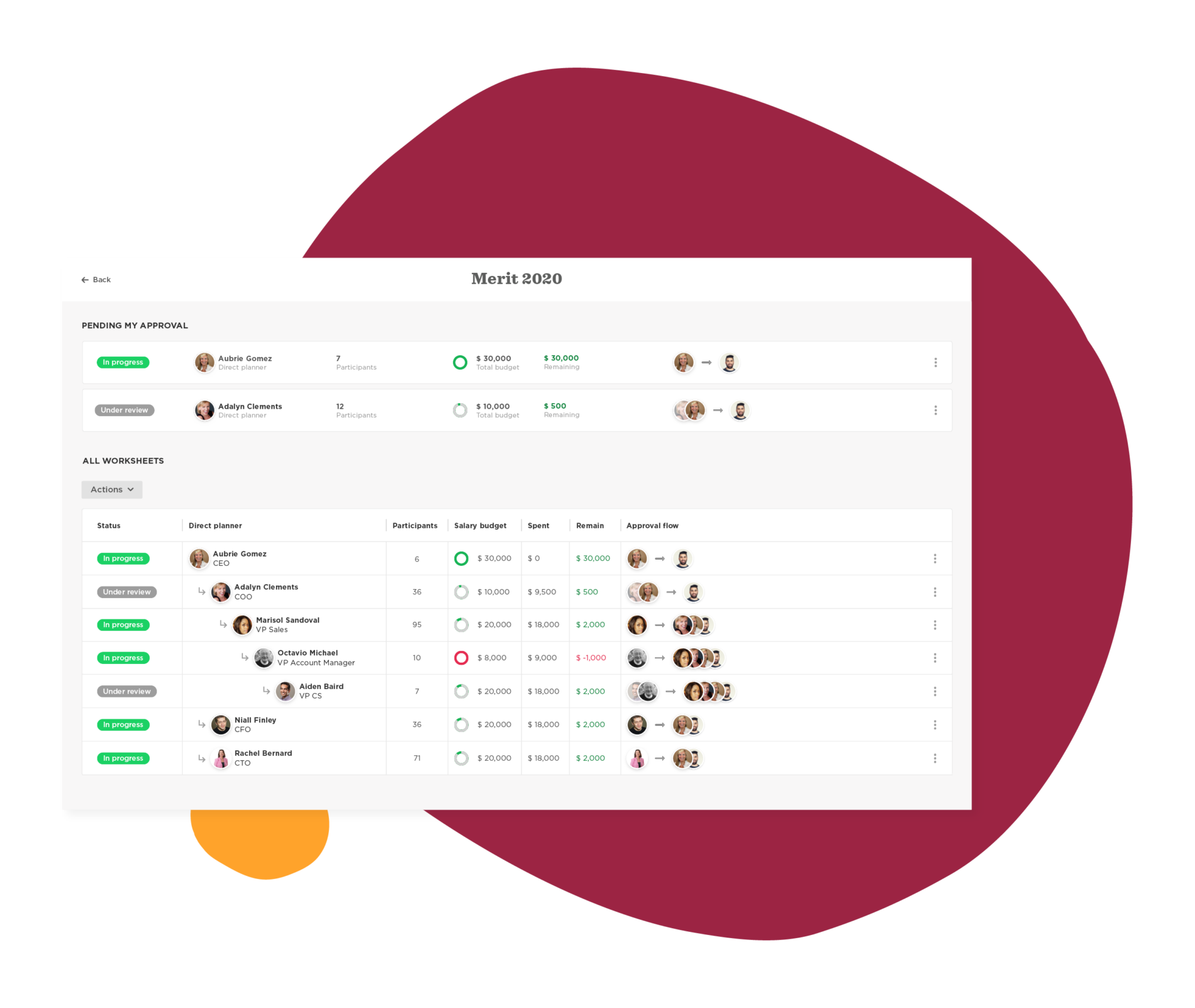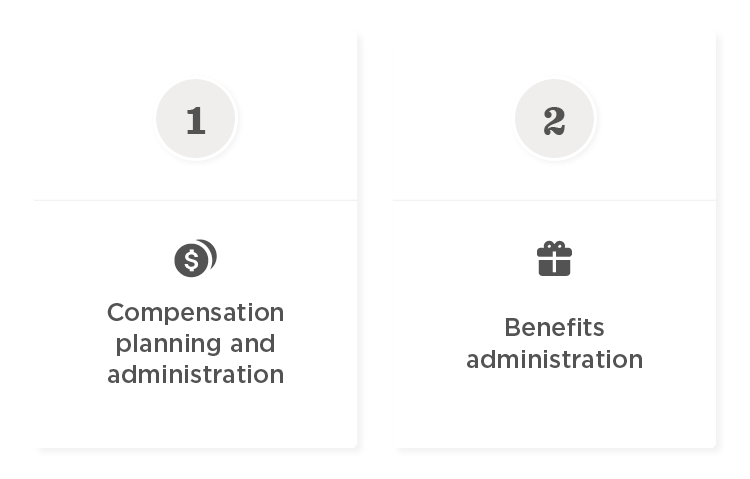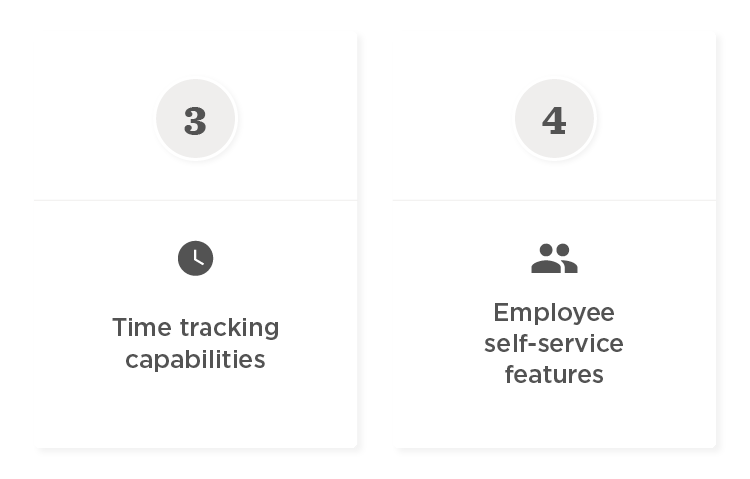Introduction
Human resource teams and professionals not only juggle a wide range of tasks but in many ways, they are also part-time information managers. Whether it’s recruitment, onboarding, performance management, payroll, or compensation, HR staff members maintain an abundance of organizational data.
Handling all that data can be time-consuming and even panic-inducing, especially if an organization uses outdated methods to manage its data. Managing employee-related data with spreadsheets creates problems with record keeping history, data security, and year-to-year analysis. Instead of using outdated spreadsheets that are saved on someone’s computer, imagine having the current compensation data your HR teams need at your fingertips. Today’s technology can provide HR teams with accurate data with the click of a button. Sounds appealing, doesn’t it?
Compensation management is a complicated task. It’s an essential part of administering and ensuring equitable pay, meeting employee expectations, and maintaining organizational fiscal responsibility. When manual tasks are transitioned to cloud-based systems, HR teams and leaders can manage, find, and analyze HR data in a fraction of the time it takes when that data is stowed away in a spreadsheet.
Replacing spreadsheets with a human capital management (HCM) platform that includes a compensation module will not only allow you to manage compensation, but also help you project for organizational growth, streamline your pay processes, and mitigate risk.
What benefits does HR tech provide for compensation strategy?

Next to an organization’s strategic planning goals, the compensation approach to support those goals is vital to success. A compensation strategy aligns workforce requirements to company goals and exists as an essential component of a company’s financial operations.
HR tech assists HR leaders and their counterparts in operations and finance in making financially sustainable calculated decisions that set the business up for long-term success.
Moving compensation tasks to technology solutions enable HR teams to be strategic partners, rather than paper pushers. When supported by real-time employee and compensation data, HR employees can consult on compensation and staffing decisions.
“When combined with the support of an expert partner, the right HR technology can transform a business,” said global HR industry analyst Josh Bersin. “Technology can transform HR into a true strategic partner and improve employee relations by making critical information more transparent and accessible. And when a crisis hits, HR technology gives leaders the data, tools, and support they need to make decisions quickly.”
From talent acquisition and turnover to performance management, equity, and time and attendance, compensation impacts an organization’s bottom line. Compensation is directly tied to each of these areas and is vital to your company’s success. A slight change could result in significant financial gains or losses.
Outdated compensation methods, such as databases or spreadsheets, may be cheaper, but they do not provide the versatility that a modern organization needs. Relying on manual processes for managing compensation not only reduces efficiencies, but it also creates potential risks with inaccurate or outdated data. HR technology will allow your HR teams to save time, reduce errors, and help position your organization as an employer of choice with a robust compensation strategy and approach.
Is now the time to update your compensation systems?
There are some concerns that technology is encroaching on human interactions. In some instances, that may be the case; however, HR tech allows for the opposite. When organizations embrace the power of an HRIS, administrative tasks can be automated, which creates more time for HR professionals to build relationships and develop strategies that connect and align the organization. Rather than being bogged down with time-consuming processes, the right technology allows HR teams to focus on HR solutions to business-critical issues.
Many business decisions are made under pressure, but when an “HR emergency,” such as employee relations issues, bubbles up, broken systems create costly errors and can even lead to legal trouble. In these cases, a system may be hastily put in place without regard for its cost or long-term viability.
Don’t wait for compensation to become overwhelming; instead, consider these signs that illuminate when it’s time to make a change and implement technology that will advance your organization’s compensation approach.
Size of the organization:
For a small startup with just a few employees, managing compensation in a database or spreadsheet probably makes sense. However, as an organization starts to grow, so does the complexity of compensation management. As you add roles, levels, and benefits, it’s essential to efficiently track the data so that you know your compensation spend and can quickly identify any gaps or discrepancies.
Employee and candidate perceptions:
Competitive compensation packages are a critical part of talent acquisition. If you’re continually gathering and reviewing data using manual methods, it’s difficult for HR teams to ensure salary data is current. Up-to-date records and information facilitate competitive, market-based pay for employees and candidates. When compensation is comparable to market rates, employee and candidate perceptions will be more favorable, leading to better hires, and improved retention.
Compensation structure analysis and projections:
As organizations grow, increased labor costs are a reality. According to Paycor, labor costs—including salaries, benefits, and employment taxes—can be as much as 70% of total business costs. Yet, Paycor’s survey found that HR professionals spend a mere 15% of their time managing those costs. If business and HR leaders are struggling to efficiently analyze current data and make compensation projections, it could be a sign that it’s time to invest in the right technology to assist with the process.
As you examine when to transition your compensation practices from manual to automated processes, consider how the switch could help streamline time-consuming tasks. The most successful approach for managing human resources is finding a balance between when to use automation and where the human connection and perspective can add the most value.
How to know what HR tech you need and evaluate solutions
HR technology helps organizations design, implement, and administer employee programs and policies. While HRIS solutions in the past may have been used primarily for data storage, they’ve become an essential part of people management and can contribute to employee engagement.
Today’s tech allows for automated and personalized workflows, personalized analytics, and network hubs. Using HR tech, leaders are now able to collect feedback and customize employee people’s profiles based on distinct details, preferences, and sensitive information. Backed by robust technology, HR professionals and system admins can now bring their people programs to life.
As part of its core abilities, an HRIS should allow organizations to streamline and automate the compensation planning process, track employee compensation history, and evaluate proposed changes. The compensation information in an HRIS helps teams determine and allocate bonuses by providing decision-makers with the timely and reliable information they need.
As you evaluate HRIS solutions with compensation modules, look for systems with four key features:

1. Compensation planning and administration:
To simplify your compensation process, find an HRIS that allows you to plan, set up, and manage compensation cycles. Leaders should be able to collaborate on shared worksheets to facilitate strategy and process development. As you move this to a process that uses tech, you’ll want a system that offers automated alerts and notifications to ensure you’re on track and on time for your planning and implementing purposes.
2. Benefits administration:
You need a clear view of your total pay package when evaluating compensation policies and practices. Whether you’re offering health care, wellness, or voluntary benefits, your HRIS should track that information so you can determine the entire package using the data from one system. Ideally, with one click, you should be able to keep comp info up-to-date, including how benefit plans fit your compensation model.

3. Time tracking capabilities:
Time and attendance are a vital part of overall compensation. Look for an HRIS that offers streamlined tracking of work cycles as well as attendance reports. Accurately paying people is key to effective compensation. Your HR tech should allow employees to submit their time worked easily, managers to approve hours, and help the organization ensure accuracy in labor hour calculations.
4. Employee self-service features:
While employees won’t have access to change their compensation, a modern HRIS will provide you with employee self-service (ESS) features that allow employees to review their compensation history, yearly earnings, and other total pay information. Employees appreciate this type of data transparency. When they review their financial benefits, it can serve to remind them of the many tangible rewards of working for an organization.
Every HRIS has a core set of features and may offer additional components based on a company’s unique set of needs. The features above are especially relevant for managing the elements of compensation; however, as you consider this investment in HR tech, ensure you find a system that offers what your organization needs now but also has the capabilities—onboarding, performance management, feedback surveys—that you’ll need as you continue to grow. Find a solution that allows you to manage compensation and your other people priorities in one place to streamline efforts and enhance data integrity.

Connect with your HR tech stakeholders
HR tech doesn’t just affect HR. It impacts other leaders, departments, and employees as well. Even if every leader doesn’t need to be involved in the purchasing process, you need to gain their buy-in and approval when transitioning to a tech-supported compensation system.
“With any new piece of technology, there will be those that are eager to adopt it and those that would rather be stabbed in the eye with a needle than switch their day-to-day processes,” according to Josh Bersin. “That’s why it is important to engage the right stakeholders from the start. Widen your team and lean on stakeholders—people outside of HR whose work will be crucial to building, implementing, and rolling out the new technology— to ease change management.”
It’s crucial to determine who will be impacted by this shift as early as possible and identify concerns these stakeholders will have regarding the change. Large organizations typically already have an HRIS in place. But for smaller organizations, this transition represents a dynamic shift in how work gets done. A study by Capterra found that while 91% of small business leaders said HR technology was critical or beneficial to their business, only 57% were using it.
That doesn’t mean you can’t implement HR tech in a smaller organization; it merely means you must do all you can to partner with stakeholders and gain their buy-in throughout the process. For business leaders, understanding exactly how a software investment will serve and benefit the overall goals of the business is the top priority. In order to explain the benefits to them, and how it will serve the organization’s needs, HR leaders must understand what stakeholders want to achieve with compensation software. Ask each stakeholder the same set of questions to find a solution that aligns with as many needs as possible.
Ask questions such as:
- What advantages do you want to gain by transitioning our compensation process to an HR tech solution?
- What compensation features do you believe our HRIS must-have?
- Describe the best outcome of using an HRIS to assist with our compensation strategy.
- How do you see your department using this new system to improve overall operations?
During your discussions with stakeholders, stress how modern compensation software allows HR professionals, frontline managers, and leaders to collaborate on decisions that impact employees’ total pay. Illustrate how the high-level oversight from an HRIS, and the benefits of automation, can transform an organization’s capabilities when it comes to delivering a compensation strategy that supports your talent acquisition and business goals.
Recommended For Further Reading
5 tips for transitioning your compensation process to HR tech
Use these five tips to ease your transition to HR tech
- Identify what you need in a compensation module. Spend time as a team to discuss the essential items in your HR technology. In terms of compensation, consider the priorities in three areas:
- Fiscal responsibility: How do you monitor comparative rates to ensure you’re not paying over or under market?
- Timely processing: What methods do you have to track and adjust compensation that aligns with the organization’s timing?
- Pay perception: How can you actively assess and address any pay inequities within your organization?
- Envision the compensation system you’ll need three to five years from now. As you consider what modules you need in an HRIS, look for a compensation offering that meets your needs today but can continue to evolve to meet your needs as the organization evolves.
- Connect with stakeholders to assess compensation priorities. Engage with employees outside of HR whose work will be impacted by a new compensation system. Obtaining their input and support is essential to manage the change and successfully implement a new approach to handling compensation.
- Ask your network for recommendations about HR tech solutions. Find other businesses in your industry that are using HR tech to support their compensation strategy. Ask what systems they’re using and how it’s helped them take compensation to the next level.
- Set up discovery sessions with vendors. Pick three to five vendors who offer an HR tech solution that could meet your compensation needs. Schedule time for a demo and prepare to discuss if and how their solution addresses your top priorities. The data that the HR team handles is not only highly confidential; it’s also used to inform business-critical decisions. At best, an error in the data can mean lost time. At worst, data errors can cause serious legal issues. Due to legal problems around pay (equity, discrimination), carefully managing compensation data is one area that HR cannot leave to chance. HR technology offers today’s organizations the opportunity to streamline the compensation process and relieve HR professionals of administrative tasks, but it also provides a method for projecting future costs and reducing the chance of risky pay practices.
Meet Bob
We know how important it is to make holistic, data-driven decisions about your people’s strategy, especially related to employee compensation. That’s why we built Bob, an employee experience platform that helps HR leaders deliver on a plan that retains employees and creates opportunities for communication and collaboration. Find the main tools that Bob uses to evaluate employee performance and compensation in our advanced Goal Setting, Performance Management, and Compensation Management modules.
